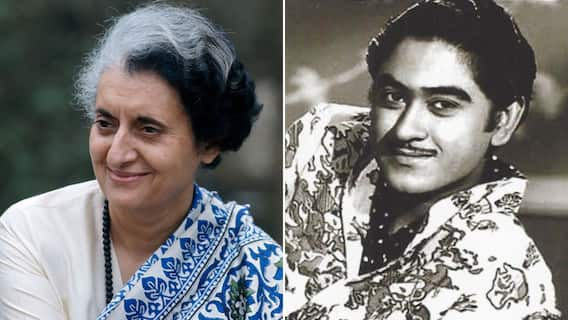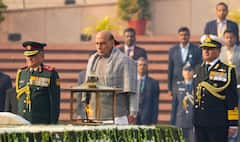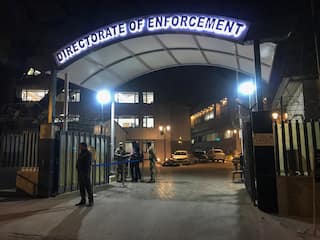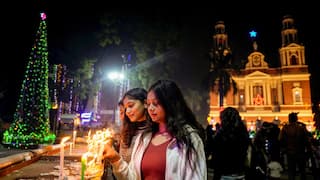'Inclusive Language, Training For Directors, Actors': Read SC's 10 Directions To Film-makers For Portraying Stories On Disability
The Supreme Court in a detailed order on July 8 has issued guidelines for film-makers, directors, actors and creators to ensure correct portrayal of persons with disabilities in visual media.

The Supreme Court in a detailed order on July 8 has issued guidelines for film-makers, directors, actors and creators to ensure correct portrayal of persons with disbilities. The court noted that the issue involves the fundamental rights of persons with disabilities, and provided a detailed framework of the portrayal of persons with disabilities in visual media that aligns with the anti-discrimination and dignity-affirming objectives of the Constitution as well as the RPwD Act.
"We are cognisant that Article 19(2) of the Constitution is exhaustive of the limitations that can be applied on the freedom guaranteed under Article 19(1)(a)127. The framework we wish to lay down is in line with our findings in Vikash Kumar (supra) where we emphasised that the fundamental rights under Part III of the Constitution apply with equal rigour to persons with disabilities," the court said.
The court retirated that the language of our discourse ought to be inclusive rather than alienating.
"We noted in Vikash Kumar (supra), that insensitive language was contrary to the dignity of persons with disabilities. As long as the overall message of the film justifies the depiction of disparaging language being used against persons with disabilities, it cannot be subjected to restrictions beyond those placed in Article 19(2). However, language that disparages persons with disabilities, marginalises them further and supplements the disabling barriers in their social participation, without the redeeming quality of the overall message of such portrayal must be approached with caution," the order read.
The court explained that such representation is problematic not because it offends subjective feelings but rather, because it impairs the objective societal treatment of the affected groups by society.
"We believe that representation of persons with disabilities must regard the objective social context of their representation and not marginalise persons with disability."
The court issued following directions:
1) Words cultivate institutional discrimination. Terms such as “cripple” and “spastic” have come to acquire devalued meanings in societal
perceptions about persons with disabilities. They contribute to the negative self-image and perpetuate discriminatory attitudes and practices in society.
2) Language that individualises the impairment and overlooks the disabling social barriers (e.g. terms such as “afflicted”, “suffering”, and
“victim”) should be avoided or adequately flagged as contrary to the social model.
3) Creators must check for accurate representation of a medical condition as much as possible. The misleading portrayal of what a condition such as night blindness entails may perpetuate misinformation about the condition, and entrench stereotypes about persons with such impairments, aggravating the disability.
4) Persons with disabilities are under-represented. Average people are unaware of the barriers persons with disabilities face. Visual media must reflect their lived experiences. Their portrayal must capture the multitudes of their lived realities, and should not be a uni-dimensional, ableist characterisation.
5) Visual media should strive to depict the diverse realities of persons with disabilities, showcasing not only their challenges but also their successes, talents, and contributions to society. This balanced representation can help dispel stereotypes and promote a more inclusive understanding of disability. Such portrayals should reflect the multifaceted lives of persons with disabilities, emphasizing their roles as active community members who contribute meaningfully across various spheres of life. By highlighting their achievements and everyday experiences, media can shift the narrative from one of limitation to one of potential and agency.
6) They should neither be lampooned based on myths (such as, ‘blind people bump into objects in their path’) nor presented as ‘super cripples’ on the other extreme. This stereotype implies that persons with disabilities have extraordinary heroic abilities that merit their dignified treatment. For instance, the notion that visually impaired persons have enhanced spatial senses may not apply to everyone uniformly. It also implies that those who do not have such enhanced superpowers to compensate for the visual impairment are somehow less than ideal.
7) Decision-making bodies must bear in mind the values of participation. The ‘nothing about us, without us’ principle is based on the promotion of participation of persons with disabilities and equalisation of opportunities. It must be put to practice in constituting statutory committees and inviting expert opinions for assessing the overall message of films and their impact on dignity of individuals under the Cinematograph Act and Rules.
8) The CPRD also requires consultation with and involvement of persons with disabilities in the implementation of measures to encourage portrayal that is consistent with it.
9) Collaboration with disability advocacy groups can provide invaluable insights and guidance on respectful and accurate portrayals, ensuring that content aligns with the lived experiences of persons with disabilities.
10) Training and sensitisation programs should be implemented for individuals involved in creating visual media content, including writers, directors, producers, and actors. These programs should emphasise the impact of their portrayals on public perceptions and the lived experiences of persons with disabilities. Topics should include the principles of the social model of disability, the importance of respectful language, and the need for accurate and empathetic representation.
Trending News
Top Headlines






































